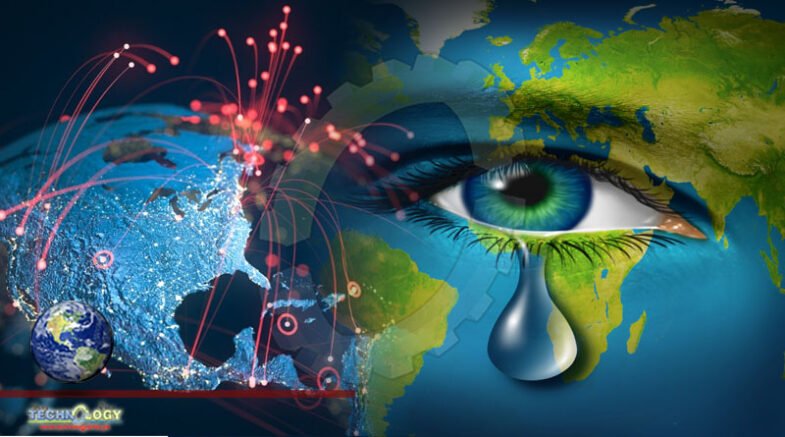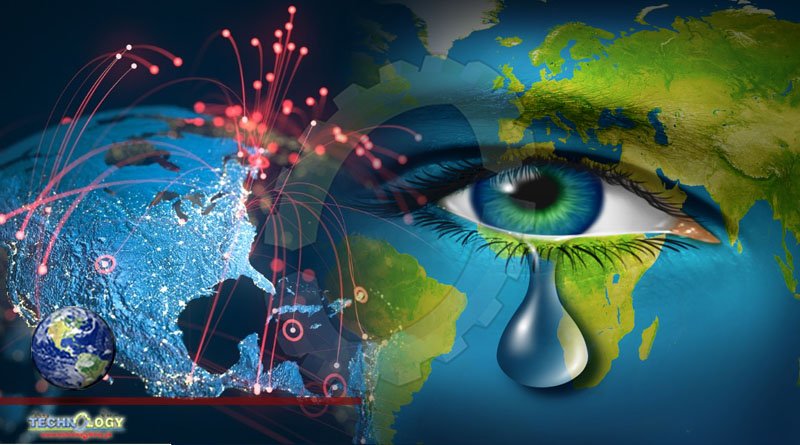A new report highlights the interconnection of global crises, from severe weather events to epidemics, and pushes for integrated solutions.

A new report highlights the interconnection of global crises, from severe weather events to epidemics, and pushes for integrated solutions.
We live in an interconnected world, and as interconnectivity increases, so does our exposure to climate risks, according to a new UN report released this week.
The study highlights that record-breaking disasters taking place in various parts of the planet should not be seen in isolation, but as interconnected events where human activity is a major root cause.
From the Amazon wildfires, the Arctic heatwave to the Beirut explosion in the past year, the report analyses ten disasters in different parts of the world in 2020 and 2021 that “were not only disastrous for people and the environment but were also the symptoms of underlying processes ingrained in our society.”
One example Global Crises is the link between the Arctic heatwave and the Texas cold wave.
In 2020, the Arctic experienced the second-highest air temperatures and second-lowest amount of sea ice coverage on record – changes that can lead to intense cold spells and heatwaves in North America and Europe, as it did with the Texas cold wave in February this year.
The freezing temperatures in the state left around four million people without electricity and resulted in the deaths of 210 people.
Meanwhile the Covid-19 pandemic, itself amplified by our hyper-connected world, has found ways to compound disasters.
The deadly impact of Cyclone Amphan, which hit the border region of India and Bangladesh in May 2020, was exacerbated by the pandemic and subsequent restrictions, which made it harder to prepare for the cyclone and in turn worsened conditions for the pandemic response in its aftermath following $13 billion in damages and the displacement of 4.9 million people.
In Lebanon last August, 2,750 tonnes of ammonium nitrate exploded at Beirut port, causing over 200 deaths, 6,000 injuries and around $4.6 billion in damages. The disaster was worsened by the pandemic, which had already overwhelmed the country’s health system.
Illustrating how disasters that are seemingly local can have global consequences, the report notes how the Amazon wildfires in 2020, which saw an area larger than Fiji burnt down, led directly to almost 2,200 people being hospitalised due to respiratory illness in South America and a further 4.5 million worldwide affected by air pollution.
The record rates of deforestation in the Amazon – known as the “lungs of the world” – is connected to high global demand for meat from the developed world and China in particular, which leads to a high demand for animal feed like soy and large plots of commercial farmland.
“Through the interconnections of global supply chains, meat consumption is one of the root causes contributing to the destruction of the Amazon,” the report said.
Other disasters the report examined included the Central Vietnam floods; Chinese paddlefish extinction; the Great Barrier Reef bleaching in Australia, and the desert locust outbreak in East Africa, the Middle East and Indian subcontinent.
Interconnected problems require interconnected solutions
The study singles out three categories of root causes most linked to the events it analysed: greenhouse gas emissions, insufficient disaster risk management, and an undervaluing of the environmental costs of development and governance decisions.
It goes on to argue that solving such issues will require going beyond tackling surface challenges.
“Given the ever-increasing frequency of severe weather events, human-made catastrophes and epidemics, piecemeal and fragmented responses will fail to address root causes and may in fact compound the challenges,” it said.
Changing our approach in dealing with extreme disaster events is urgent as “the window of opportunity is closing,” the report warns.
“While some impacts outlined in this report are irreversible, such as the extinction of the Chinese Paddlefish, others require swift intervention to avoid passing tipping points where long-term impacts can no longer be avoided.”
It then calls for behaviour-influencing measures like taxing fossil fuels and for policymakers to pursue “win-win-win” solutions that harness interconnectivity “to reduce the severity of impacts cascading from disastrous events and therefore the emerging risks they contribute to.”
For the moment, our present failure to address interconnected root causes and emerging risks is “accelerating the climate crisis, creating new and more intense extreme events, increasing societal vulnerabilities, and leading us to tipping points including mass extinctions and loss of ecosystem services.”
To find a way out will then require conceiving of solutions that tackle governance, inequality, alongside personal attitudes and behaviour in order to “confront these systemic issues and allow for interconnected ways of solving multiple problems at once,” the report concludes.
Source TRT World
